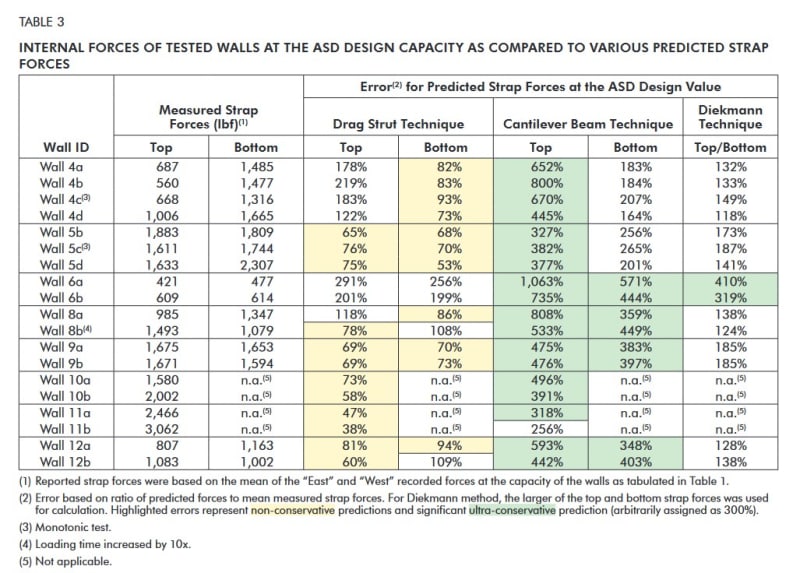I have to design my first irregular diaphragm and have been going through Terry Malone's example in "The Analysis of Irregular Shaped Diaphragms" from WoodWorks. (Attached)
I think I am getting it. Seems like a series of FBD's and superimposing them(?).
The thing I don't get is where the 20' width of the transfer diaphragm came from. He doesn't mention it and there is nothing in the plan to suggest it has to be 20'. It seems like it could be anything from 0 (which can't work) and 80' or maybe 40' where the shear is 0. It seems like the width changes the plf results.
What am I missing? Is there a rule of thumb? Do you play around with the distance to get the final shear in plf under the capacity of a typical nail spacing (6", 4", 3", 2")? Malone gets a max shear of 400 plf and assuming allowable and other values looks like a 4" spacing is needed.
Thanks
I think I am getting it. Seems like a series of FBD's and superimposing them(?).
The thing I don't get is where the 20' width of the transfer diaphragm came from. He doesn't mention it and there is nothing in the plan to suggest it has to be 20'. It seems like it could be anything from 0 (which can't work) and 80' or maybe 40' where the shear is 0. It seems like the width changes the plf results.
What am I missing? Is there a rule of thumb? Do you play around with the distance to get the final shear in plf under the capacity of a typical nail spacing (6", 4", 3", 2")? Malone gets a max shear of 400 plf and assuming allowable and other values looks like a 4" spacing is needed.
Thanks

